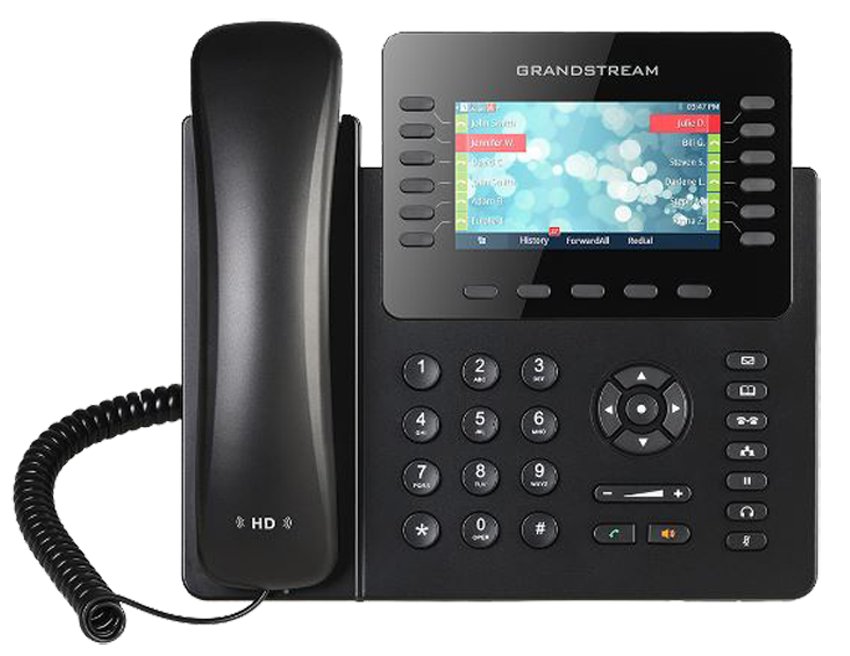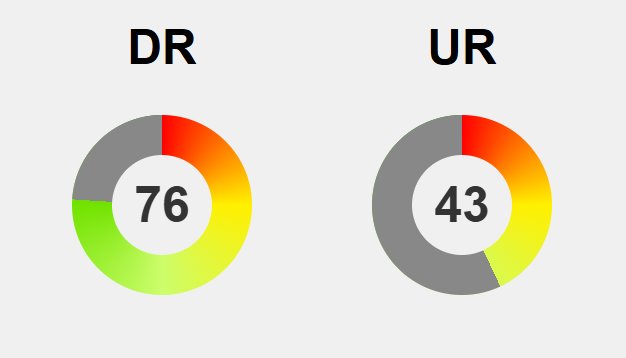Caller ID spoofing is a digital deception that makes it appear as if calls originate from trusted sources—banks, government agencies, or local numbers—when in reality, the caller’s identity is manipulated through sophisticated tools and network exploits. This technique blurs the line between legitimate communication and malicious scams, enabling fraudsters to steal personal information, impersonate officials, and carry out identity theft with alarming ease. As spoofing becomes more accessible through VoIP platforms, apps, and vulnerabilities in telecom protocols like SS7, the threat intensifies, putting individuals and organizations at risk. While technologies like STIR/SHAKEN aim to combat this deception, scammers continuously adapt, making vigilance and verification crucial. Are we truly protected in this era of digital masquerades? Staying informed, cautious, and proactive remains our best defense against these increasingly convincing digital trickery, highlighting the urgent need for ongoing innovation and awareness to safeguard our communication channels.
Unveiling the Art of Caller ID Spoofing: A Digital Deception
Caller ID spoofing is a digital trick that can make it appear as though a call is coming from anywhere—be it a trusted business, a government agency, or a local number. It’s a deceptive practice that exploits the way our phones display caller information, transforming a helpful feature into a tool for manipulation. As this technique becomes more common, understanding how it works is essential for protecting yourself from potential scams.
The process involves faking the caller’s identity by altering the information transmitted during the call setup. Using specialized software or internet-based services, scammers and even legitimate organizations can override the actual phone number and replace it with a different one. This makes the call appear trustworthy, even when it’s not. Thanks to the accessibility of these tools, spoofing is now easier and more widespread than ever before, enabling anyone with basic technical knowledge to craft convincing fake calls.
Most caller ID spoofing relies on Voice over Internet Protocol (VoIP) services, which transmit calls over the internet instead of traditional landlines. These platforms often include features that allow users to manually change the caller ID, making it simple to display any number or name they choose. Some scammers exploit vulnerabilities in telecom signaling protocols, like SS7, to inject false caller ID data directly into the network. This network-level manipulation makes spoofed calls appear legitimate and harder to detect.
Apps designed specifically for caller ID spoofing further simplify the process. They enable users to input any number or name, routing calls through servers that rewrite the caller ID information on the fly. Some hackers hijack telecom infrastructure or use hacked servers to send false data at scale. These methods leverage weaknesses in telecom systems, making spoofed calls increasingly convincing and difficult to distinguish from genuine ones.
Understanding these mechanisms is crucial because it reveals how our trusted caller ID can be manipulated for malicious purposes. Recognizing the sophistication and accessibility of spoofing techniques helps us stay alert and cautious. As scammers continue to refine their methods, staying informed becomes our best defense against falling victim to these digital masquerades.
Inside the Mechanisms of Spoofing: Tools and Techniques Uncovered
Caller ID spoofing is achieved through a combination of digital tools and technical manipulations of telecom networks that make it surprisingly easy for those with the right know-how. Most scammers and even legitimate organizations rely on Voice over Internet Protocol (VoIP) services, which transmit calls over the internet instead of traditional phone lines. These platforms typically include features that allow users to manually set or alter the caller ID, making it straightforward to display any number or name they choose. This ability to modify outgoing data at the source is what enables widespread spoofing.
The core of spoofing involves intercepting or generating signaling data—the technical instructions that tell your phone who’s calling. When a call is initiated, your device receives this data from the telecom network, which includes the caller’s number and sometimes their name. Spoofing tools manipulate this information before it reaches your device, replacing the real number with a falsified one. This real-time interference ensures that your phone shows the fake caller ID, making the call appear authentic.
VoIP platforms are particularly favored because they are inherently more flexible than traditional landlines. These services often allow users to specify any caller ID they want through simple online dashboards or interfaces. Scammers exploit vulnerabilities in telecom signaling protocols, such as Signaling System 7 (SS7), to inject false caller ID data directly into the network. These technical exploits make spoofing even more convincing, as the fake data becomes an integral part of the call’s signaling process, rather than just an overlay.
Apps designed specifically for caller ID spoofing further streamline the process. They enable users to input any number or name, routing calls through servers that rewrite the caller ID information on the fly. Some hackers hijack telecom infrastructure or use hacked servers to send false data at scale. These methods leverage weaknesses within telecom systems, allowing malicious actors to produce highly believable fake calls that are difficult to distinguish from legitimate ones.
Many of these techniques hinge on vulnerabilities in signaling protocols like SS7, which coordinate call routing and caller information across networks. By hacking into or manipulating these systems, scammers can reroute calls or inject false caller IDs without needing access to individual accounts. This network-level tampering makes spoofing not only easier but also more convincing, often bypassing standard detection methods and increasing its reach.
Understanding these mechanisms illuminates how digital call deception operates and why it’s so effective. The accessibility of spoofing tools combined with the sophistication of network exploits means that the line between genuine and fake calls is increasingly blurred. Recognizing these methods helps you remain vigilant and better prepared to spot and avoid malicious spoofed calls.
The Dark Side of Spoofing: Risks, Scams, and Identity Theft
Caller ID spoofing opens the door to a wide range of serious risks, especially when malicious actors use it to carry out scams and frauds. By faking the caller’s identity, scammers can make their calls appear as if they’re coming from trusted sources such as banks, government agencies, or well-known companies. This deception boosts the chances that victims will answer and trust the caller, making it easier to steal personal details or money. Because the fake caller ID looks legitimate, many people lower their guard, unwittingly falling into the trap.
Once trust is established, scammers often use these spoofed calls to trick individuals into revealing sensitive information like social security numbers, bank account details, or passwords. They might pose as bank representatives warning of suspicious activity or pretend to be government officials threatening legal action. The convincing nature of these calls, reinforced by fake caller IDs that mimic real numbers, makes the scam highly effective. Victims, thinking they’re dealing with legitimate institutions, often provide confidential information without hesitation.
Spoofing also facilitates identity theft on a larger scale. Criminals can gather enough personal data through these deceptive calls to impersonate victims or commit further fraud. They might open new accounts, take out loans, or make purchases in someone else’s name—all while the actual person remains unaware. This digital call manipulation helps scammers stay under the radar, complicating efforts to trace and stop them. The more convincing the spoofed caller ID, the easier it becomes for fraudsters to operate undetected.
Beyond individual victims, organizations and businesses are also targeted. Scammers spoof company numbers to impersonate employees or executives, aiming to access sensitive corporate data or authorize fraudulent financial transactions. These attacks can lead to significant financial losses, damage reputations, and even expose organizations to legal liabilities. The accessibility of spoofing tools means that even those with minimal technical skills can launch these scams, broadening the scope and danger of such threats.
The escalating sophistication of spoofing techniques makes it increasingly difficult to distinguish real calls from fake ones. Scammers now use methods that produce highly believable fake caller IDs, often mimicking local or official numbers. This can lull recipients into a false sense of security, prompting them to answer calls they might normally ignore. Relying solely on caller ID as a trust indicator no longer guarantees safety, emphasizing the need for cautious verification.
The proliferation of spoofing contributes to a flood of scam calls that clog phone lines and disrupt communication. Governments and telecom providers are deploying new standards and regulations to combat this, but scammers adapt quickly, exploiting vulnerabilities in signaling protocols like SS7 and turning to unregulated VoIP services. Staying vigilant and informed remains essential; recognizing that caller ID can be manipulated helps you approach suspicious calls with caution, helping prevent costly scams and protecting your personal and financial security.
To further protect yourself from these deceptive tactics, consider using call verification services or apps that can help identify genuine calls. Learning about tools that verify caller identities, such as those provided by trusted security providers, can add an extra layer of defense. For more information on how to safeguard your communications, visit this resource on spoofing protection and stay informed about the latest security practices.
Guard Your Line: Practical Strategies to Detect and Prevent Spoofed Calls
When you receive a call that feels suspicious or out of place, take a moment to pause before reacting. Scammers often create a sense of urgency or pressure to push you into quick decisions. Instead of rushing, calmly assess the situation: hang up if the caller claims to be from a bank, government, or tech support, and verify their identity through official channels. Using trusted contact information—such as a number from your bank statement or the organization’s website—helps ensure you’re speaking with a legitimate representative.
Leverage call verification apps like Truecaller, Hiya, or RoboKiller to add an extra layer of protection. These tools analyze incoming calls and flag potential scams based on community reports and known scam databases. While helpful, don’t rely solely on technology. Combine these apps with cautious habits, and remember that no system is foolproof. Staying alert and skeptical remains your best defense against spoofed calls.
Pay close attention to the conversation itself. If the caller asks for money, requests remote access, or pressures you to act quickly—such as transferring funds or sharing passwords—that’s a red flag. Even if the caller sounds convincing or mentions details that seem accurate, don’t disclose sensitive information until you verify their identity through a trusted source. Asking questions or calling back on a known, official number can prevent falling for scams.
Always verify the caller’s identity by reaching out through official contact methods. For instance, if someone claims to be from your bank, hang up and call the bank directly using a number listed on your bank card or their official website. Scammers often spoof familiar numbers, so avoid using the number they provide during the call. This extra step can reveal whether the call is genuine or part of a scam.
Blocking suspicious numbers and reporting scam calls helps protect you and others. Most smartphones allow you to block unwanted callers easily, and many telecom providers offer services to filter spam and scam calls. Reporting these calls to your carrier or local authorities helps build community awareness and may assist efforts to shut down scam operations. Staying vigilant and proactive makes a difference.
Remember, staying cautious and verifying identities are your strongest tools against digital deception. Trust your instincts, be skeptical of urgent requests, and use available tools to screen calls. Taking these simple steps can save you from costly scams, protect your personal information, and help you navigate the era of digital call masquerades with confidence.
The Future of Caller ID Spoofing: Challenges, Innovations, and Vigilance
Caller ID spoofing remains a significant challenge in today’s digital communication landscape. Despite advances in technology and ongoing efforts by regulators and telecom providers, scammers continuously find new ways to bypass defenses and exploit vulnerabilities. Protocols like STIR/SHAKEN have been introduced in many regions to authenticate caller identities and reduce spoofing, but they are not foolproof. Scammers adapt quickly, turning to unregulated VoIP services or hacking signaling systems like SS7 to inject false caller ID data, keeping the problem alive and evolving.
Looking ahead, we can expect scammers to develop even more sophisticated tools. AI-powered verification systems may analyze call patterns and detect anomalies in real time, making it harder for malicious actors to succeed. These innovations could become standard in telecom networks, providing consumers with better protection. International cooperation and shared databases might also play a larger role in dismantling spoofing networks across borders, though enforcement gaps still offer opportunities for scammers to exploit.
Technology alone won’t fully resolve the issue. Public awareness and individual vigilance are crucial. People need to understand that displayed caller ID isn’t always trustworthy. Education campaigns about recognizing scam tactics and verifying calls through trusted channels can significantly reduce victimization. Simple habits—like refusing to share sensitive information over the phone or independently confirming suspicious calls—remain some of the most effective defenses.
As new tools and standards emerge, accessibility and effectiveness will improve. Call-blocking apps, real-time scam alerts, and smarter spam filters are already making a difference and are likely to evolve further. Governments and telecom providers are working to implement stronger security standards, but widespread adoption is key to making a real dent. Combining technological solutions with vigilant behavior creates a layered defense that can significantly cut down spoofing success rates.
While progress is steady, scammers are constantly refining their tactics. Staying alert, informed, and adaptable is essential. Recognizing that caller ID can be manipulated helps us approach calls with caution, reducing the risk of falling for scams. Building awareness now helps protect personal and financial security in an increasingly connected world. The ongoing efforts of regulators, service providers, and individuals will shape the future of safe communication, ensuring that digital deception does not undermine trust in our daily interactions.






